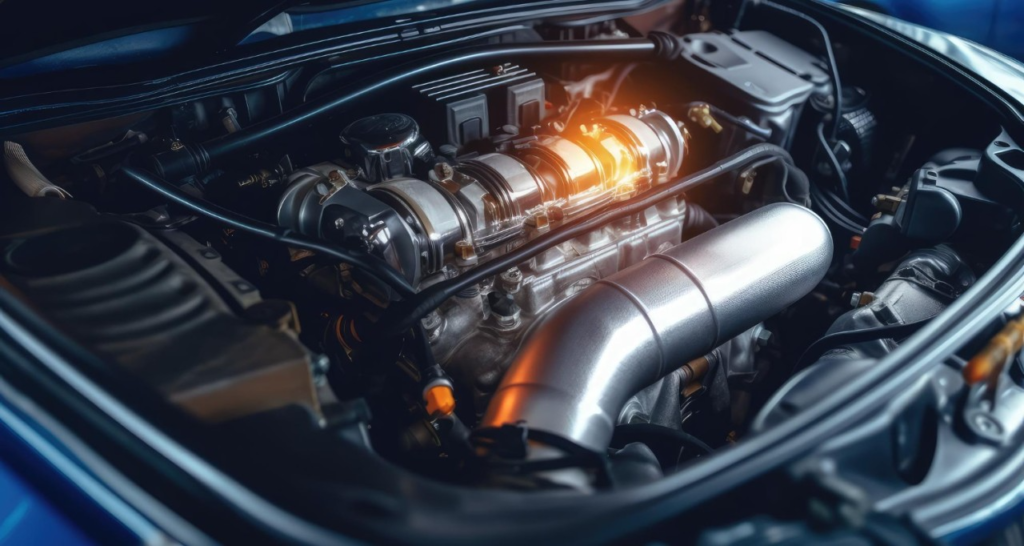Understanding 3SGTE Panic Common Problems and How to Solve Them

The Toyota 3S-GTE engine is a name that resonates deeply in the world of performance cars and automotive enthusiasts. Renowned for its power, durability, and tuning versatility, the 3S-GTE found its home in vehicles like the Toyota Celica GT-Four and Toyota MR2 Turbo, carving its legacy in motorsport history. However, even this engineering marvel is not without its challenges.
Owners of the 3S-GTE may sometimes find themselves in situations that cause confusion, frustration, and concern—situations often referred to as “3S GTE panic.” These moments of panic arise when something goes wrong, and the engine doesn’t perform as expected. From mechanical failures to tuning mishaps, 3SGTE panic can strike at any time.
In this article, we’ll explore the causes, symptoms, and solutions for 3S GTE panic. By the end, you’ll have a detailed understanding of how to keep your engine running smoothly and minimize the chances of unexpected issues.
What is “3SGTE Panic”?
The term “3SG TE panic” describes the anxiety or frustration that occurs when a 3S-GTE engine exhibits unexpected problems. These issues can range from minor performance hiccups to potentially catastrophic failures. Due to the engine’s popularity in performance tuning and modifications, troubleshooting these problems can become complex, particularly when aftermarket parts or custom setups are involved.
While the 3S-GTE is robust and built to handle the rigors of high-performance driving, neglect, poor maintenance, or improper modifications can lead to issues. Understanding the root causes and how to address them is key to avoiding or resolving 3SG TE panic.
Key Causes of 3SGTE Panic
There are several common causes of 3SG TE panic, many of which are tied to the engine’s turbocharged nature and high-performance design. Below are the most frequent culprits:
Boost-Related Problems
The turbocharger system is the heart of the 3sgte panic performance, but it’s also one of its most vulnerable components. Common boost-related issues include:
- Boost Leaks: Damaged intercooler piping, loose clamps, or cracked hoses can cause a loss of boost pressure, leading to reduced engine power and performance.
- Boost Creep: This occurs when the turbocharger produces more boost than the wastegate can regulate. Left unchecked, it can result in overboost and engine damage.
- Faulty Wastegate or Blow-Off Valve: Malfunctions in these components can disrupt the turbo system, causing erratic boost levels or turbo lag.
Fuel Delivery Issues
A proper fuel supply is critical for the 3S-GTE to function optimally. Problems in this area include:
- Weak or Failing Fuel Pump: The factory fuel pump may struggle to meet the demands of a modified or tuned engine, leading to fuel starvation.
- Dirty Fuel Injectors: Over time, injectors can become clogged or fail, causing uneven fuel delivery, misfires, or rough idling.
- Fuel Pressure Regulator Failures: A failing regulator can disrupt the air-fuel mixture, leading to performance issues or stalling.
Ignition System Failures 3sgte panic
The ignition system is essential for creating the spark needed for combustion. Faults in this system can lead to:
- Worn or Improperly Gapped Spark Plugs: Old or damaged spark plugs can cause misfires, poor fuel economy, and rough idling.
- Faulty Ignition Coils: Weak or failing coils may result in intermittent misfires or a loss of power under load.
- ECU or Timing Issues: The engine control unit (ECU) may develop faults or require retuning if the ignition timing is off.

Cooling System Challenges
Heat management is critical in a turbocharged engine like the 3S-GTE. Overheating is a common source of panic, often caused by:
- Leaking or Blocked Radiators: A damaged or clogged radiator can hinder the cooling system’s ability to dissipate heat effectively.
- Worn-Out Water Pumps: A failing water pump reduces coolant flow, leading to increased engine temperatures.
- Insufficient Cooling Capacity: High-performance setups may overwhelm the factory cooling system, requiring upgrades to radiators or fans.
Oil-Related Issues
Lubrication is vital to the health of the 3sgte panic, especially for the turbocharger. Oil problems can include:
- Oil Starvation to the Turbo: Insufficient oil flow can cause premature turbo failure.
- Oil Leaks: Worn gaskets, seals, or lines can lead to leaks that result in low oil levels and engine wear.
- Dirty or Incorrect Oil: Contaminated oil or using the wrong oil type can degrade engine performance and cause excessive wear.
Aftermarket Modifications
Many 3S-GTE owners modify their engines to enhance performance, but these changes can introduce new problems, such as:
- Improper Tuning: A poorly tuned engine may run too rich or lean, causing detonation, poor performance, or engine damage.
- Sensor Mismatches: Aftermarket parts may require upgraded sensors that, if incompatible or miscalibrated, can result in inaccurate readings.
- ECU Malfunctions: Aftermarket or piggyback ECUs can cause issues if not properly integrated with the engine.
Recognizing the Symptoms of 3SGTE Panic
Early detection of engine problems is critical for minimizing damage and avoiding complete failure. Below are common symptoms that signal trouble in a 3S-GTE engine:
- Check Engine Light (CEL): The CEL is an early indicator of issues, ranging from minor faults to serious problems.
- Loss of Power: If the engine feels sluggish or unresponsive, it could indicate issues with the turbo, fuel system, or ignition.
- Excessive Smoke: Different colors of smoke can indicate specific problems—blue for burning oil, white for coolant leaks, and black for running too rich.
- Unusual Noises: Whistling, knocking, or hissing sounds may point to boost leaks, detonation, or exhaust problems.
- Erratic Idling: Fluctuating idle speeds can be caused by vacuum leaks, ignition faults, or ECU issues.
- Overheating: Rising engine temperatures are a critical warning sign and should be addressed immediately.
Preventing 3S GTE Panic
The best way to avoid 3sgte panic is through proactive maintenance, quality parts, and proper tuning. Here’s how:
Perform Regular Maintenance
- Change the oil every 3,000–5,000 miles using high-quality synthetic oil designed for turbocharged engines.
- Inspect belts, hoses, and seals for wear or damage, replacing them as necessary.
Invest in Quality Components
- Upgrade to a high-flow fuel pump and injectors if increasing power output.
- Use a larger radiator, intercooler, or oil cooler to manage heat effectively.
- Replace worn or failing OEM parts with high-quality aftermarket options.
Ensure Proper Tuning
- Work with an experienced tuner who understands the 3S-GTE platform.
- Use a standalone ECU for precise control of boost, ignition, and fuel mapping.
- Regularly monitor air-fuel ratios (AFRs) and other critical parameters.
Monitor Engine Performance
- Install gauges for boost pressure, oil pressure, and AFRs to stay informed about the engine’s health.
- Use data-logging tools to track performance and diagnose issues quickly.
Diagnosing and Resolving 3SGTE Problems
When problems arise, diagnosing the root cause is essential for effective repairs.
Boost Leaks 3sgte panic
- Diagnosis: Perform a smoke test or pressure test on the intake system to identify leaks.
- Fix: Replace damaged hoses, tighten clamps, and reseal connections.
Fuel System Failures
- Diagnosis: Test the fuel pressure and inspect injectors for clogs.
- Fix: Upgrade the fuel pump, clean or replace injectors, and check the fuel pressure regulator.
Ignition Faults
- Diagnosis: Inspect spark plugs and ignition coils for wear or damage.
- Fix: Replace faulty components and ensure proper spark plug gap.
Overheating
- Diagnosis: Check for coolant leaks, thermostat failure, or radiator blockages.
- Fix: Flush the cooling system, replace faulty components, and upgrade cooling capacity if necessary.
Oil Issues
- Diagnosis: Inspect oil levels, look for leaks, and analyze oil quality.
- Fix: Replace gaskets, seals, or lines and use the recommended oil type.
Conclusion
Owning a Toyota 3S-GTE engine is a rewarding experience, but it requires care, knowledge, and attention to detail. By understanding the causes and solutions for “3SGTE panic,” you can keep your engine running smoothly and enjoy its exceptional performance for years to come.
The key to avoiding panic lies in regular maintenance, quality parts, and proper tuning. Armed with this guide, you’ll be prepared to tackle any issues that arise, ensuring your 3S-GTE remains a reliable and powerful companion on the road or track.







